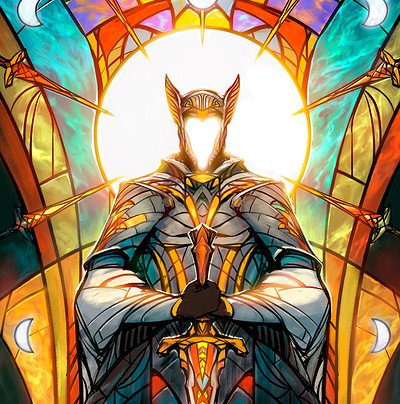Are you a Quiet Speculation member?
If not, now is a perfect time to join up! Our powerful tools, breaking-news analysis, and exclusive Discord channel will make sure you stay up to date and ahead of the curve.
Hi guys,
Last week I said I would do a recap on my Pro Tour specs to see how they might be improved. Here's what I wrote a few weeks ago in my article laying out my Pro Tour specs:
This week we are going to do some early speculation on Pro Tour Dominaria. After many weeks of Standard action, everyone knows the top decks in the format by now. The most recent Grand Prix was dominated by BR Vehicles—no doubt a deck that will be a big part of the Pro Tour.
Having seen the power level of the red deck, I predict one of two things for the coming PT. Either it’s going to be full of aggro decks like Pro Tour Hour of Devastation (the Top 8 consisted of 6 Ramunap Red variants, 1 BG Midrange, and 1 Zombies deck), or Shota Yasooka will come out with some special control brew and beat everybody.
My predictions were pretty accurate. BR Vehicles/Aggro and Mono-Red Aggro dominated the Top 8 of PT Dominaria. I'm not sure what Shota brought to the PT but he did not come out with any surprises this time. Let's proceed to revise what I picked over the last two weeks.
The Successes
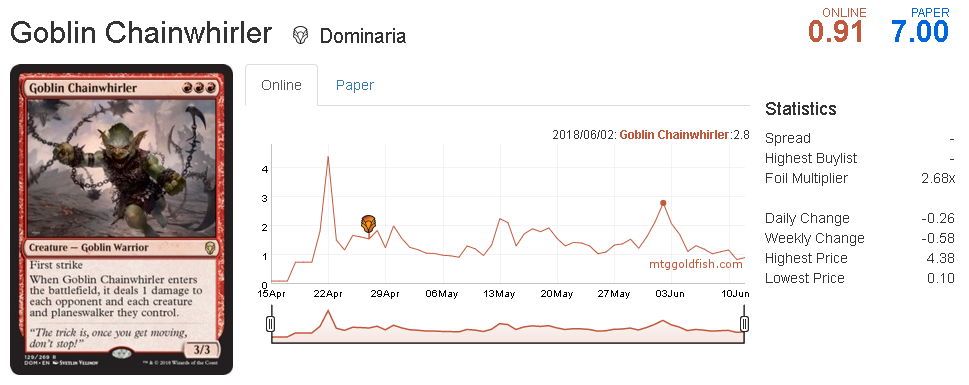
This is a rather easy one, although I did not gain big money on it. It was pretty obvious back then that this is one of the most powerful cards in Standard, and having so many copies in the Top 8 is definitely one of the reasons the price spiked to 2.8 tickets.
From this 2.8-ticket peak, there's a sharp drop-off immediately following the Pro Tour. This highlights the importance of being physically in front of your computer during the Pro Tour, as I pointed out last week.
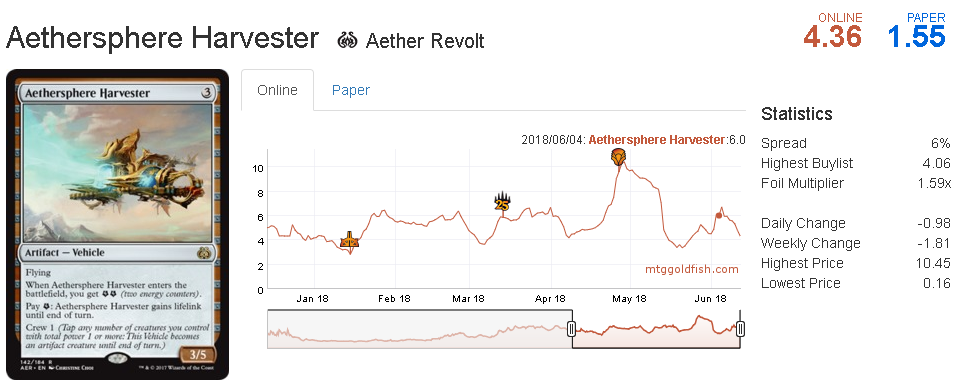
Two weeks ago Aethersphere Harvester was about 3.7 tickets. I believed it had potential because 3/5 stats and lifelink were well positioned—Harvester was a great card at the Pro Tour among a field of Mono-Red decks and Rekindling Phoenixes. Surprisingly, not many players played it in the mainboard, except for the new Blue Green-Karn brew that plays a full playset in the main.
I think this will be a staple moving forward, but its time in Standard is not long. I do hope you guys earned some tickets from Harvester but you probably shouldn't invest in it anymore in the future.
Good Picks During the Pro Tour
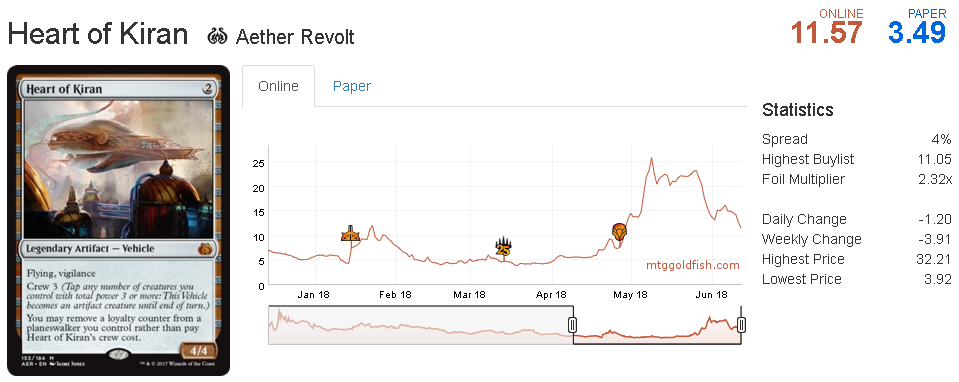
If you notice the most recent low point for Heart of Kiran, that was actually during Day 1 of the PT. It was a good pick at that point in time because red-black decks occupied 26% of the PT metagame. I'm not sure how the coverage team distinguished between RB Aggro and Midrange, but the important thing is that both of these decks play Heart of Kiran.
With such a big portion of the metagame consisting of this deck, there has to be a reason—many pros have identified it as the best deck after a bunch of testing. With this information from the coverage, we should know the chances of RB decks reaching the Top 8 is very high.
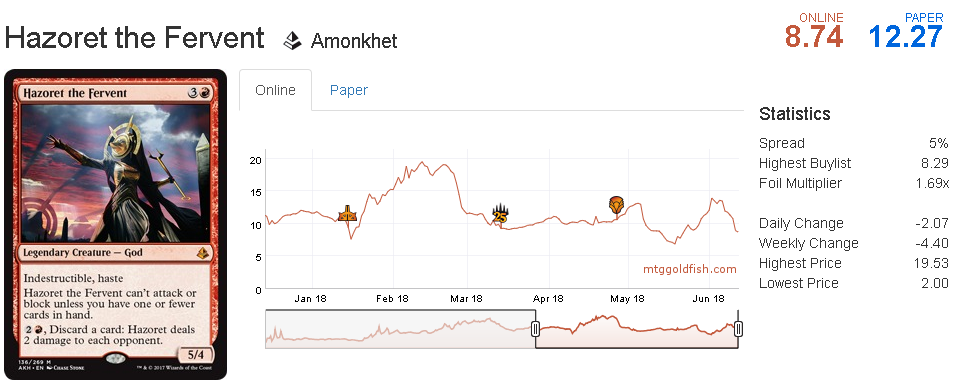
Despite a quarter of the field playing Red-Black, Mono-Red Aggro has its own advantages. It's easier to turn on Hazoret the Fervent in Mono-Red because the deck can usually dump everything in hand by turn four. Knowing how good Hazoret is, along with the info we got from coverage, we shouldn't have missed Hazoret as one of our purchases.
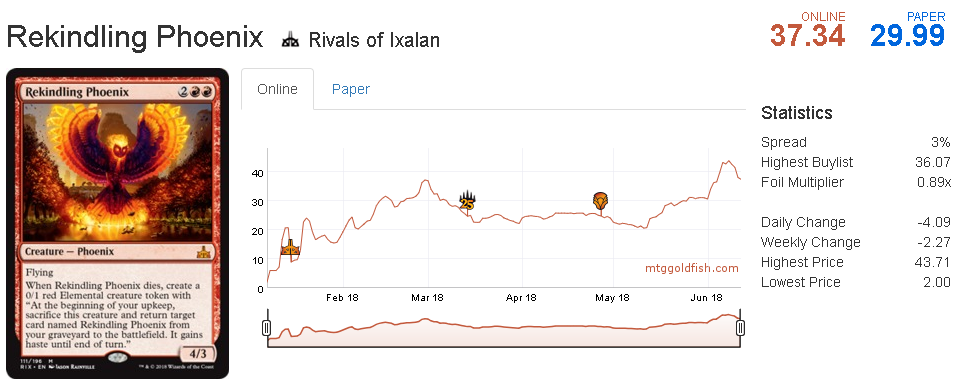
Rekindling Phoenix was one of the highlights of the Pro Tour. The price of Phoenix online increased by about 7 tickets throughout the event, and continued increasing after the PT concluded.
Many people probably missed out on this because of the 30-ticket buy-in at the time. Not everyone has hundreds of spare tickets and it's a pretty risky pick, as Standard cards rarely go beyond 30 tickets unless they're breaking the format.
However, it turns out that Phoenix really is the best card in the format. I'm not sure how can we learn from this, because it all depends on how much risk you can take at the moment.
The Failures
It's hard to acknowledge failures, but we need to learn from our mistakes. Most of my mistakes this time were caused by overestimating certain cards.
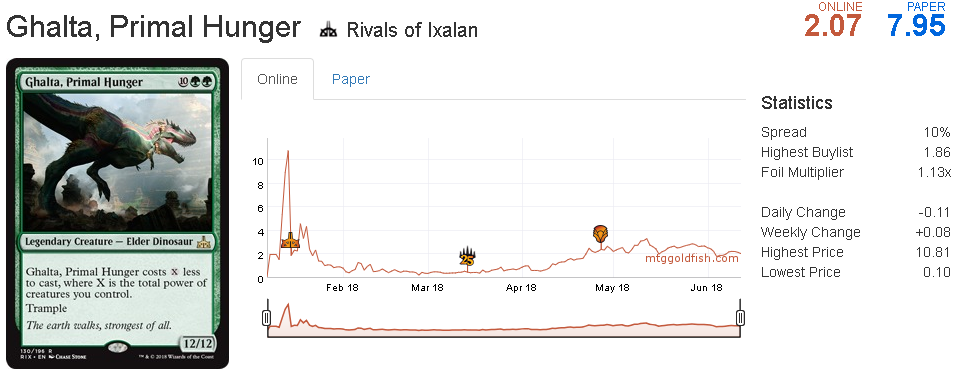
Ghalta, Primal Hunger was described as something similar to Metalwork Colossus. Previously I said the Dinosaur version of the Colossus was slightly better because the deck plays a bunch of big creatures at cheap costs. However, I didn't realize that creatures are easier to deal with compared to artifacts.
If we look at the top-performing decks at the PT, Mono-Green Stompy still performed pretty well, but the players didn't make it to Top 8 because of poor draft records. Nevertheless, Ghalta was not played as a four-of in these decks, simply because as a legendary creature, players can be stuck with multiple copies of them in hand. Furthermore, these 12/12 creatures can't do anything if you do not have enough power in play.
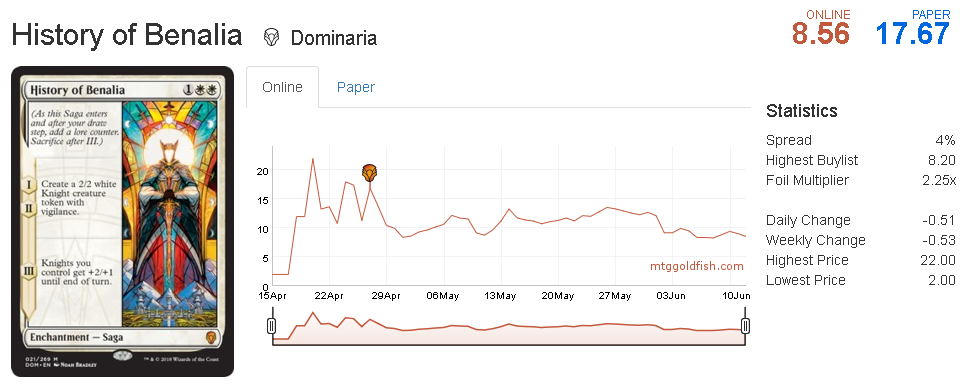
I still think History of Benalia is a great card, although the price has dropped slightly since two weeks ago. I think this card is being overshadowed by red decks in the format.
What I've learned from this pick is to avoid underplayed cards whenever there's a dominant deck in the format. These cards are underplayed for a reason—probably because the decks that play them just aren't very good against the best decks.
This is especially important when the best decks are aggressive, because more players naturally gravitate towards those decks already. When the win rates aren't high enough, these underplayed decks can easily be out-numbered, and the probability of them reaching Top 8 becomes slimmer. Thus cards under this category shouldn't be part of our specs.
Having said that, there are players who won seven or eight rounds out of ten with History of Benalia. If you have invested in this card, you can still hold onto them as they might become popular later.
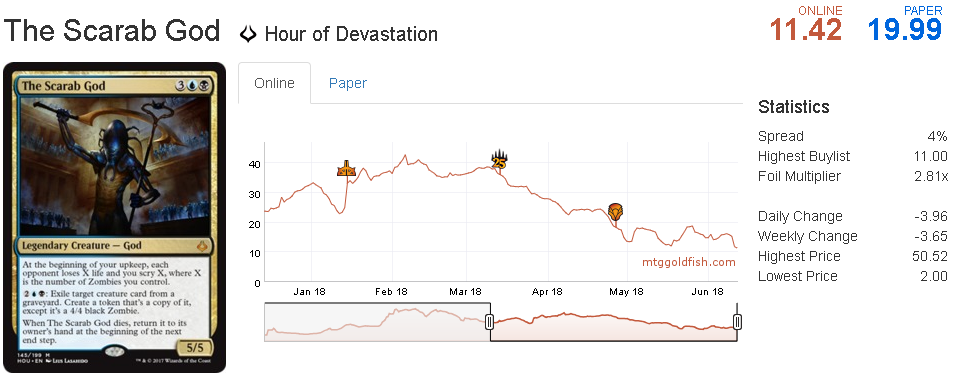
The Scarab God was probably the most overrated card from my article. This card was simply too slow against the horde of red decks in the PT. Even if a player can survive until turn five with God in play, the red decks can always deal the last few points of damage through burn spells or flying creatures like Phoenix or Heart of Kiran.
Furthermore, the God is only played as a one- or two-of, unlike in the earlier Energy decks. The time for The Scarab God in Standard appears to be over, and I made a mistake by hoping it would be good in decks that weren't seeing much play at the time.
Alright guys, that’s all for the week. Thanks for reading, and I’ll see you again next week.
Adrian, signing off.


